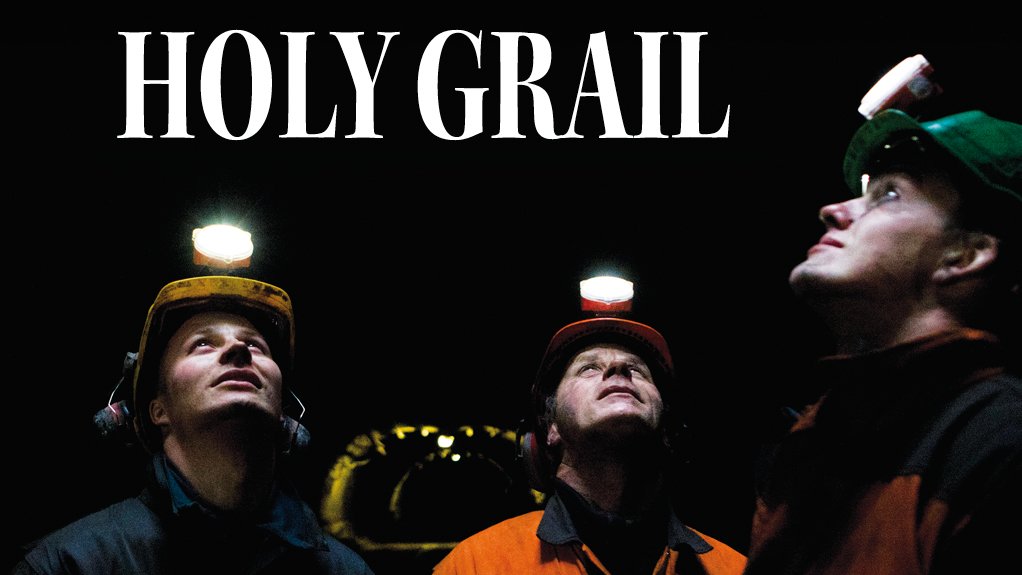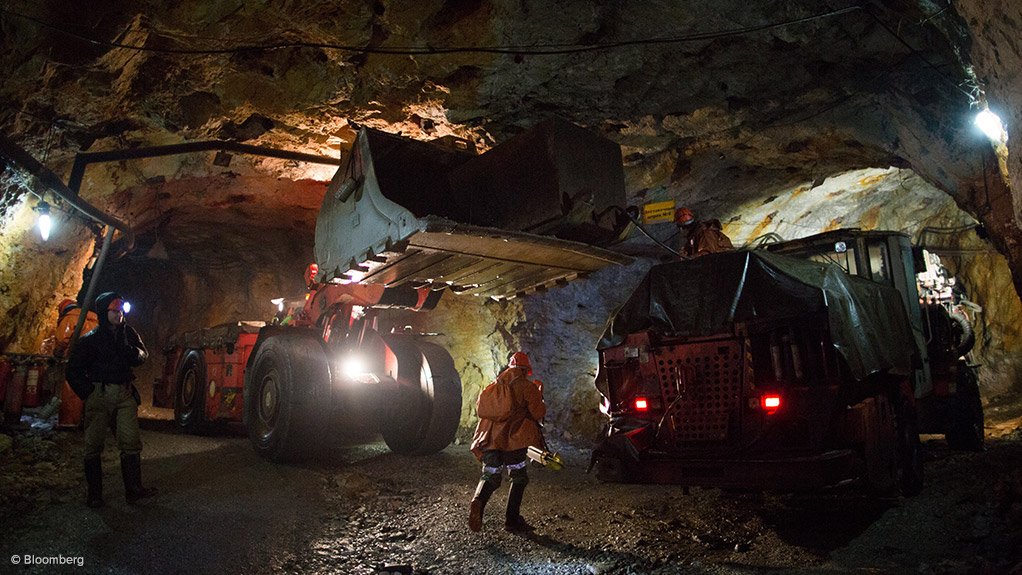Fatality figures falling each year as SA mining sector targets 'zero harm'





SAFETY CRITICAL Correct behaviour affects successful health and safety practices at mines more than any other factor
Photo by Bloomberg
WARREN BEECH The 2016 mine fatality results are definitely no indication of a plateauing of performance
As the yearly recorded number of mining injuries and fatalities in South Africa continues to decrease, albeit at a slower pace in 2016 than in previous years, the focus of the industry shifts once again to renewed efforts to bring the number of fatalities to zero.
However, as the Department of Mineral Resources (DMR), mining companies, trade unions and lobby groups continue to emphasise their collective goal of zero harm, 2017 is already out of the running as the year in which this goal will be achieved, owing to four fatalities occurring before the release of the 2016 figures.
The DMR pointed out, however, that more mining companies are achieving 12 fatality- free months and compliance with statutory reporting had improved, with mines timeously submitting their occupational hygiene statutory returns and yearly medical reports.
International law firm Hogan Lovells mining head Warren Beech tells Mining Weekly that the goal of zero harm is attainable and the 2016 results are definitely no indication of a plateau in terms of statistical performance.
Fatalities steadily decreased from 112 in 2012 to 93 in 2013, 84 in 2014 and 77 in 2015. However, an improvement of only 5%, with 73 deaths recorded in 2016, has raised the ire of many in the mining industry, with claims that generalised stagnation is hampering further progress in trying to reduce fatalities.
This notwithstanding, the number of fatalities for 2016 is the lowest ever, albeit excluding three, officially, missing miners at the Lily mine, in Barberton, following a fall-of-ground (FoG) incident on February 5, 2016.
The number of injuries recorded dropped from 3 138 in 2015 to 2 662 in 2016, which shows that the mining industry managed to reduce the incidents by 15%.
The platinum sector recorded the greatest decrease in injuries, having achieved a 16% reduction in incidents, or 219 fewer incidents, from 2015 to 2016.
However, the sector recorded six more fatalities last year, compared with 2015, when 27 fatalities were recorded. The gold sector also only managed a 3% improvement, reducing the number of deaths in 2016 to 30, having recorded 33 in 2015.
Many commentators noted that the 5% drop in fatalities across the industry, compared with 2015, indicates the need for renewed focus to ensure further reductions in injuries and, especially, fatalities.
The major causes of fatalities were FoG incidents (33%), while general classification- type accidents (slip and fall, falls from heights and fires) accounted for 21%. Transport factors, including rail-bound equipment, accounted for 14% of fatalities.
Beech says two major factors are behind poor health and safety performance in South Africa’s mining industry during 2016.
The primary issue is behaviour – the attitude and approach to health and safety at mining operations. “The key to addressing behaviour is internalising a sense of safety,” Beech says, explaining that health and safety at mines needs to go beyond implementation on site only, and needs to be embedded as common practice by all mine staff. For example, vehicle speed limits, although mostly adhered to at mine sites, are quickly disregarded as soon as personnel leave the site, as enforcement is drastically reduced and the threat of being caught is less probable, he elaborates.
The second issue is the general instability in the mining sector, which affects the morale of mine management and staff, including political insecurity nationally and job insecurity, as well as general commercial insecurity in the mining industry, with depressed commodity prices and variable demand from the once thriving primary markets.
In some instances, commercial insecurity has been so severe that struggling mining companies have implemented Section 189 restructurings, resulting in retrenchments. The prospect of this happening creates a sense of demoralisation in labour-specific workforces, which is likely to contribute to less attention being paid to health and safety protocols, not looking out for one another in what can be a dangerous working environment and more wandering thoughts about noncritical work matters.
Trade union Solidarity occupational health and safety and sustainable development deputy general-secretary Advocate Paul Mardon says that other aspects, such as tension between mining companies and the DMR because of Section 54 stoppages, contribute to a decrease in focus and concentration on health and safety in the workplace. “Reciprocal trust and respect, and successful cooperation are indispensable for health and safety at work.”
Beech also highlights that there were many disruptions in 2015 and 2016. “The mines went through major restructuring as a result of the international commodities downturn . . . in terms of demand and prices.” Restructuring impacts on work teams, including supervision, the sense of camaraderie and smooth workflow.
Looking Ahead
Beech says there is a shared view in the South African mining industry that the sector is expected to perform better this year than it did in the past few years, owing to potential recovery in commodity prices.
He says, should this translate into improved stability –easing tensions among personnel, trade unions and mine management in industry – it will result in secure working environments. “This will have a major positive impact on settling the crews, operational structures, supervising techniques and, ultimately, the mining rhythm.”
Beech says the Mine Health and Safety Act is a “very good” piece of legislation, having come a long way since the 1994 Leon Commission of Inquiry and the resulting report, published in 1995. It concluded, at the time, that the regulatory framework for health and safety in mines that was in place at the time was inadequate and that the existing laws had been inadequately enforced. The commission concurred with the views expressed at the attendant hearings that the accident record of the industry was “appalling” and found that the scale of death, injury and disease was such that remedial action had to be taken urgently.
However, although the Act is sufficiently robust, there will always be interpretation and implementation issues, Beech says.
In this vein, the recent addition of new regulations regarding electricity, conveyor belts and trackless mobile machinery, besides others, will take time to be properly implemented, as there is a phase during which mines will have to come to terms with implementing and complying with the new regulations, Beech explains.
Meanwhile, he emphasises that the yearly tripartite safety campaign – comprising the DMR, mining companies and trade unions – held throughout the mining industry towards the end of every year, must be commended as critical and by all accounts highly successful.
This campaign entails initiatives to raise safety awareness and implementing these at individual mine shafts. It plays a critical role in raising the level of safety during the approaching holiday period, when injuries and fatalities historically spike, as operations tend to wind down and the focus on the immanent leave period increases and fatigue levels tend to be higher.
Beech is optimistic that even fewer fatalities and injuries will be reported in 2017 as the mining industry strides a difficult but essential path to recovery.
Comments
Press Office
Announcements
What's On
Subscribe to improve your user experience...
Option 1 (equivalent of R125 a month):
Receive a weekly copy of Creamer Media's Engineering News & Mining Weekly magazine
(print copy for those in South Africa and e-magazine for those outside of South Africa)
Receive daily email newsletters
Access to full search results
Access archive of magazine back copies
Access to Projects in Progress
Access to ONE Research Report of your choice in PDF format
Option 2 (equivalent of R375 a month):
All benefits from Option 1
PLUS
Access to Creamer Media's Research Channel Africa for ALL Research Reports, in PDF format, on various industrial and mining sectors
including Electricity; Water; Energy Transition; Hydrogen; Roads, Rail and Ports; Coal; Gold; Platinum; Battery Metals; etc.
Already a subscriber?
Forgotten your password?
Receive weekly copy of Creamer Media's Engineering News & Mining Weekly magazine (print copy for those in South Africa and e-magazine for those outside of South Africa)
➕
Recieve daily email newsletters
➕
Access to full search results
➕
Access archive of magazine back copies
➕
Access to Projects in Progress
➕
Access to ONE Research Report of your choice in PDF format
RESEARCH CHANNEL AFRICA
R4500 (equivalent of R375 a month)
SUBSCRIBEAll benefits from Option 1
➕
Access to Creamer Media's Research Channel Africa for ALL Research Reports on various industrial and mining sectors, in PDF format, including on:
Electricity
➕
Water
➕
Energy Transition
➕
Hydrogen
➕
Roads, Rail and Ports
➕
Coal
➕
Gold
➕
Platinum
➕
Battery Metals
➕
etc.
Receive all benefits from Option 1 or Option 2 delivered to numerous people at your company
➕
Multiple User names and Passwords for simultaneous log-ins
➕
Intranet integration access to all in your organisation






















